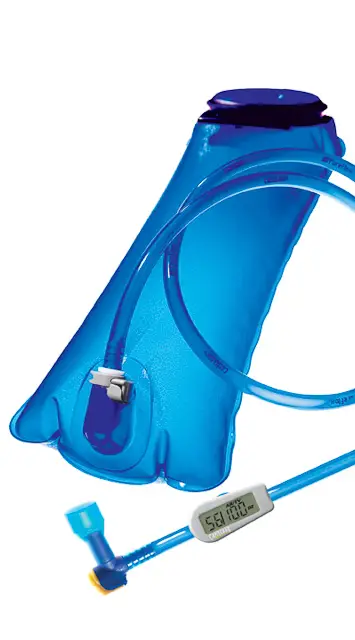I like big bikes. As in burly-ish big bikes. 140-160mm travel slack ‘n’ low affairs with 30+lbs overall weight. I love riding them in steep terrain. The kind of “granny ring griding” uphill followed by “minimal-pedaling-required” descending.
But there have been a few test bikes this year with more modest amounts of travel and significantly lower weights that have been extremely capable, not-very-compromised bikes. These bikes are much faster and just plain more FUN on less steep terrain (once you stick a shorter stem, wide bars and decent tyres on them ;)). These bikes have got me back into enjoying long mileage rides again, rather than just “mining” the same couple of valleys for a few hours. Long mileage rides that take in a lot of entertaining technical-ish trails. The two bikes that stand out immediately are the Cannondale RZ One Twenty and the Ghost Lector. A linkage-driven single pivot and a classic four-bar respectively.
So I was looking for a 100-120mm travel bike with a different kind of suspension design to have an extended time with. I also wanted a bike from a lesser-known brand to see what (if anything) looking beyond the Usual Suspects results in, besides the higher price tag.

Pivot Mach 4
From: Upgrade Bikes
Price: £1,599
Enter the Pivot Mach 4. 100mm of travel at the back delivered by a DW Link “floating pivot” design.
I’ve ridden DW/floating designs in the past and they’ve had their pros and cons. The design can make for a very laterally stiff frame. They generally seem to deal with big hits and landings very well, they almost ride like they have an extra inch of travel than they really do. They don’t mind being ridden hard and aggressively. They can also be a bit vague feeling under climbing. And some of the earlier designs exhibited a surprising amount of pedal-feedback under compression in certain gear combinations.

I have every faith that the Mach 4 will survive – and thrive – by being ridden hard over rough stuff. The frame is a testament to stiffness. Tapered head tube (1.125″ to 1.5″ Zero Stack), 92mm wide BB shell, short chunky carbon linkages, stout square-profile stays. And as mentioned above, hopefully the Mach 4 will do that DW Link thing of riding like it has a bit more than “just” 4 inches of travel.

About that 92mm bottom bracket; it comes pre-installed with a press-in Shimano XTR BB that is claimed to be lighter and support the bearings better than the standard thread-in designs. The bottom bracket carries a three year warranty from Shimano. FSA also do a version of these bearings.

Forks, forks, forks… The Mach 4 was principally designed to work with a 100mm fork. Pleasingly Pivot don’t mind people using 120mm forks on it. They even go as far as to say it’s a better option for some riders/terrain. For the initial build I’m going to be running 100mm DT Swiss forks on it.
The seat tube takes 30.9mm seat posts. I’ll be installing a Crank Bros Joplin in there. An adjustable seatpost is a great thing to have on a bike that’s for riding flat-out. I don’t want to stop for raising/lowering seat posts but I also don’t want to ride the technical sections with a saddle jammed in my crotch.

I’ve not decided on too much other build kit as yet apart from a set of American Classic wheels with Stans NoTubes system and a pair of Geax Saguaro 2.2 TNT tyres.
I’ll probably start with my “standard” cockpit combo (710mm bars, 70mm stem) so I have a known “base” I can compare against and get a better feel for how the frame rides. I’ll try and get stuff that is suitably light (but not daft). I can tweak things from there.
Brakes-wise I might rob a set of TRP Dash Carbon brakes from one of my other bikes as they’ll suit the bike very well, both functionally and aesthetically.
The frame accepts “direct mount” front mechs. I have a Shimano XT E-Type mech that will be slapped on there shortly. Having had similar mechs on my old Cannondale Prophet I quite like direct-mount front mechs. They’re easy to set-up, accurate under shifting and don’t seem to get clogged with mud so much. We’re seeing a lot more direct-mount mechs on modern suspension bikes nowadays due to pivot placements needing to occupy the space where a front mech clamp would normally go.

Geometry stuff (this is all quoted from Pivot, I’ll update with my own actual measurement once the bike is built up). For a Large frame running a 100mm fork…
Seat tube: 20″
Top tube (eff): 24″
Head tube 5.5″
Head angle: 71°
Seat angle: 73°
Chain stays: 16.75″
BB height: 12.8″
Standover: 28.75″
On my scales the frame weighs in at 5.8 lbs (including shock and BB).
One last thing, although the frame’s lines may not be everyone’s taste, the frame is beautifully put together. Crisp machining. Impressively even welds. Everything’s chased and faced. The blue anodising is even all over (no mismatching front and rear triangles here). The red anodised bolts are a cute touch. So far the price tag is approaching acceptable. Here’s hoping the ride meets my high expectations.






